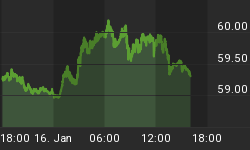Solar power is poised for a major boom. Solar panel technology is advancing by leaps and bounds and the industry’s infrastructure has never been so efficient or so affordable. In fact, tech and science news site Singularity Hub, in an article titled “The Age of Solar Energy Abundance Is Coming in Hot“, says that not only is the industry heating up, it’s set to soar. “As the price-performance ratio of solar technologies begins to undercut traditional energy sources,” the article projects, “we will soon witness the mass integration of solar cells into everyday infrastructure, meeting energy demands across the globe.”
Despite these strong trends and stronger rhetoric, however, not all facets of the solar industry are feeling the love yet. Oilprice reported just last week that “thanks to a hyper-competitive solar startup market, we are witnessing particularly rapid advancements in more unobtrusive solar panels designed for urban environments, such as increasingly efficient transparent solar panels and Tesla’s Solar Roof project,” but this week, new reporting shows that Tesla is yet to reap the benefits of their groundbreaking solar panel technologies.
While other solar panel companies are seeing incredible growth and promising profit margins, Tesla’s solar energy subsidiary SolarCity is struggling. While the California-based company was at the top of the solar energy market when Tesla acquired it about three years ago, SolarCity has since slipped in the rankings. “While SolarCity was one of the largest providers of solar energy in the US only a few years ago, its seen its share of the market decline since Tesla's acquisition back in 2016,” reports TechRadar. “Other providers now lead the way, with Tesla installing only 29 megawatts worth of solar panel technology in the three months it took competitor SunRun to install 103 megawatts.”
Now, in response to the company’s lackluster sales, Tesla’s SolarCity is trying out a new strategy. Instead of selling solar panels, the company is now trying to rent them out. This new model is currently being marketed in the United States and will be launched in Europe next year. “Renting starts at $50 per month in the states of Arizona, Connecticut, Massachusetts, New Jersey, and New Mexico – with an uptick to $65 in California,” according to TechRadar. Related: Wealth Gap Widens Between Baby Boomers And Millennials
While Tesla is counting on their new rental strategy to boost the bottom line for the floundering SolarCity subsidiary, consumers are likely to notice that it’s still in their best interest to buy a solar panel outright instead of paying an annual rental fee, “especially given the $1,500 (around £1,230 / AU$2,210) cost of removing those panels if you do choose to stop renting.” Meanwhile, SolarCity's most economic solar panel options start at $7,000 (around £5,700 / AU$10,300) after factoring in tax incentives. If a consumer uses the panel for more than 12 years, they’ve already gotten more than their money’s worth as compared to renting.
Perhaps this is all part of Tesla’s plan to boost sales after all. Tesla’s founder and Chief Executive Officer Elon Musk admitted as much on Twitter, saying that even after Tesla’s rollout of new, lower solar panel pricing, it’s “still better to buy”, but the celebrity entrepreneur assured his followers that either way, installing solar panels is like “having a money printer on your roof if you live in a state with high electricity costs.”
If Tesla’s rental plan can’t save SolarCity, perhaps the market can. If the solar industry is set to explode at the high rate of adoption that many experts are predicting, sales will go up across the board. And even though buying a solar panel outright is a better economic decision in the long run, we know well that this often means nothing when looking through the lens of behavioral economics. For many would-be solar adopters, $50 a month is probably sounding like a steal right about now.
By Haley Zaremba for Oilprice.com

















